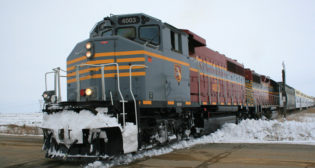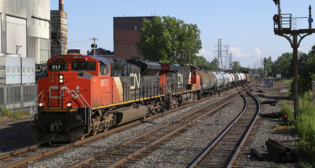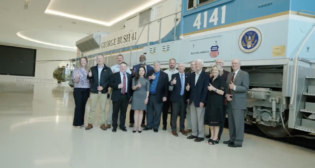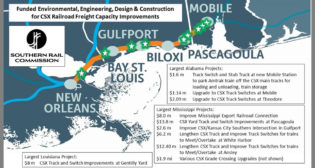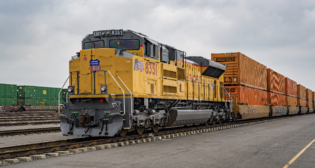
Atlas Completes Testing
Written by William C. Vantuono, Editor-in-Chief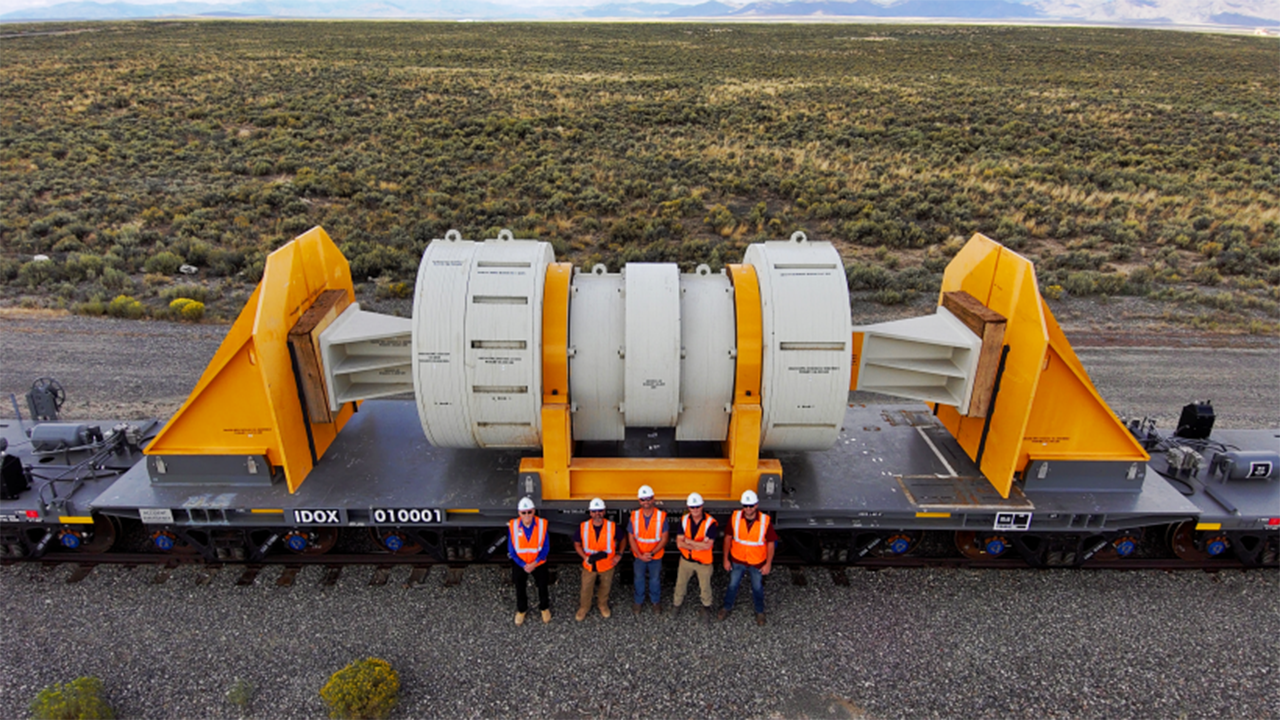
U.S. DOE photo
The Atlas, a specialized railcar that will be used to transport SNF (spent nuclear fuel) and HLW (high-level radioactive waste) for the U.S. Department of Energy (DOE), has completed a 1,600-plus-mile round-trip from Colorado to Idaho to wrap up final testing. The railcar “could be cleared for operational use before the end of the year,” DOE said.
Atlas is a 12-axle railcar designed specifically to transport large containers of SNF and HLW and “meets the highest safety standards set by the Association of American Railroads,” DOE said. The AAR standard is S-2043, “Performance Specification for Trains Used to Carry High-Level Radioactive Material (HLRM),” and is a part of the Manual of Standards and Recommended Practices – Car Construction Fundamentals and Details.
The final test simulated a full-scale shipment of SNF, carrying steel test weights instead of radioactive cargo. The Atlas was loaded to its maximum weight with a 240-ton (480,000-pound) test load designed to simulate the heaviest transport container certified by the U.S. Nuclear Regulatory Commission. The train departed from Pueblo, Colo. on Sept.5 and completed a successful four-day round-trip journey to Scoville, Idaho, collecting data along the way (video below). Atlas was accompanied by a rail escort vehicle (REV) and two buffer railcars, and hailed by two Union Pacific locomotives. The entire trip logged more than 1,680 total miles.
The four fabricated prototype railcars (Atlas, two buffer railcars, and REV) are expected to be ready for operational use as soon as the final testing data can be analyzed and documented, and conditional approval is granted by the AAR Equipment Engineering Committee. The overall cost of the 10-year project was approximately $33 million.
The REV was developed in partnership with the Naval Nuclear Propulsion Program to replace its aging fleet of escort vehicles. “The collaboration helped reduce the overall cost of the Atlas project significantly,” DOE noted. “Going forward, Atlas will undergo some additional testing and travel to DOE’s 2024 National Transportation Stakeholders Forum Annual Meeting in Denver. DOE plans to use Atlas and other railcars to support emergency responder training and informational roadshows prior to commencing shipments of spent nuclear fuel to a federal consolidated interim storage facility. The Department is currently working on an effort to site one or more federal consolidated interim storage facilities for storing spent nuclear fuel using a consent-based siting process.”
“This milestone underscores the Department’s dedication to advancing the safe and secure transportation of radioactive materials, including spent nuclear fuel,” said Dr. Patrick R. Schwab, DOE’s Atlas railcar project manager. “Through the successful completion of the test and the Atlas railcar project, we have delivered a capability for the Department to effectively transport spent nuclear fuel to future DOE storage and disposal facilities, filling a key role for successful operation of a nuclear waste management system.”
Currently, there are three cask-carrying railcars designed for transporting SNF in North America. The first two are a twelve-axle railcar developed by the U.S. Navy, and the twelve-axle Atlas developed by DOE. The third is an eight-axle railcar named Fortis, also developed by DOE.
The Fortis project is a joint venture led by ENSCO, Inc. and including Kasgro Rail Corp., Oak Ridge Technologies LLC and RailcarCO Corp. to fabricate and test a prototype railcar designed to transport SNF and HLW (high-level radioactive waste) for the DOE. Fortis is an eight-axle, flat-deck railcar designed by Sharma and Associates, Inc. with technical support from Pacific Northwest National Laboratory. It is also designed to AAR Standard S-2043.
